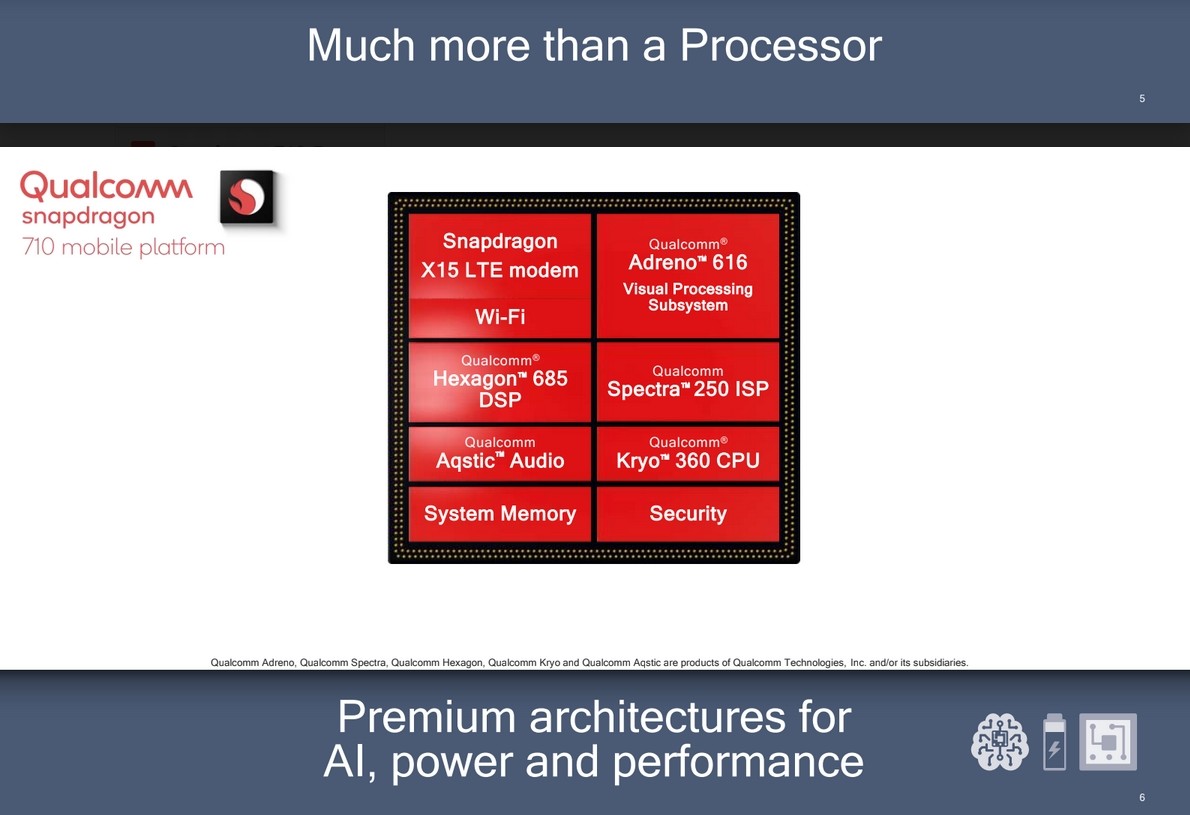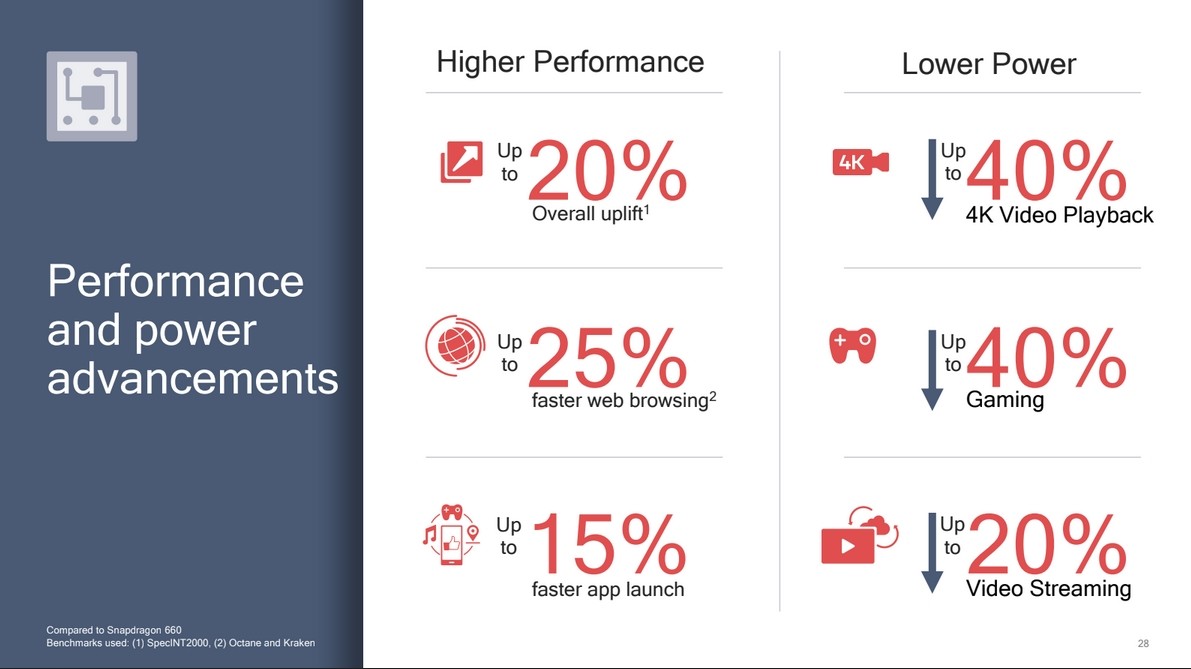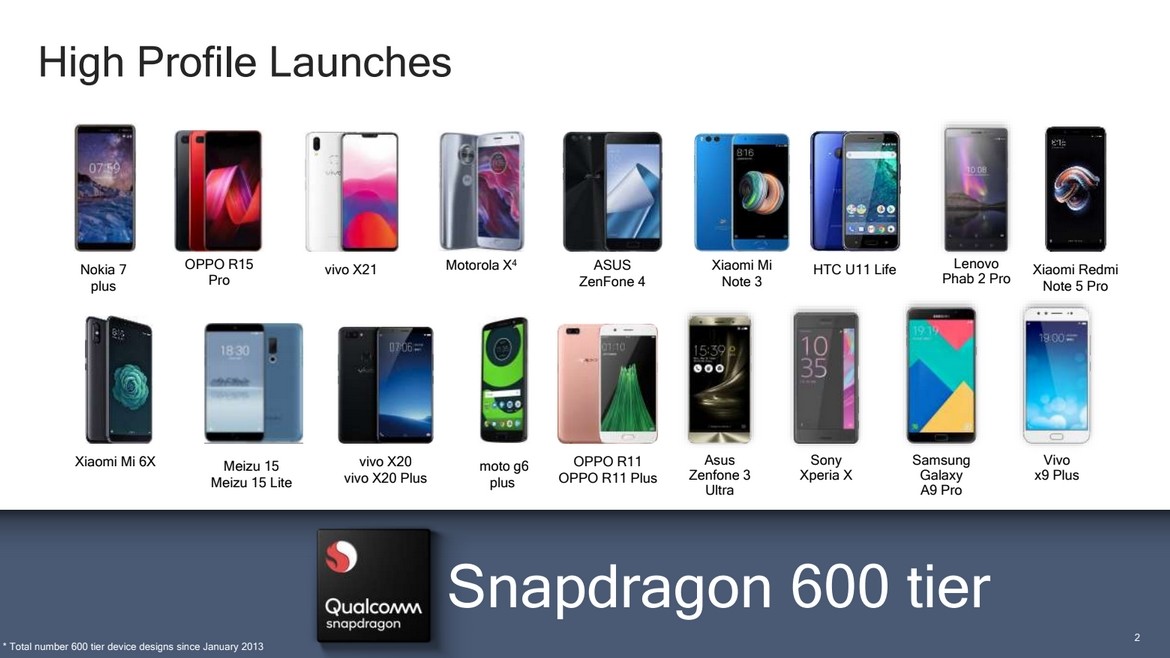We need more powerful mobile processors. Not as much as the Snapdragons of the 800 family, but more so than the Snapdragons of the 600 family.
That is the problem that Qualcomm wants to solve with its new family of SoCs, which has as its first member the Snapdragon 710. The objective: to offer a new level of power and performance that stands out especially in one area: efficiency.
More power and efficiency for the mid-range
The appearance of the Snapdragon 710 marks the beginning of this new family. It does so with a noteworthy note: the new SoC will not stop developing those of the 600 family, nor of course those of the 800 family.
That was one of the important clarifications of the presentation that we attended by videoconference. In it, Qualcomm highlighted the new features of the new System-on-a-Chip (SoC), which brings significant innovations and improvements, especially with respect to the Snapdragon 600 family.

One of them is in its attention to artificial intelligence. Qualcomm says that its artificial intelligence engine is able to offer twice the performance in applications that use artificial ingeligencia systems when comparing the Snapdragon 710 with the Snapdragon 660.
There are also new developments in the field of image and video capture: the new Qualcomm Spectra 250 ISP will allow future devices that integrate it to benefit from a remarkable help in low light shots or those in which noise reduction systems are needed. It supports up to two 20 Mpixel sensors, but it is also very oriented to be used for facial recognition systems.
The Snapdragon 710 also comes with support for playback of 4K HDR videos, and have a Snapdragon X15 LTE modem with support for up to 800 Mbps download channels. That connectivity is also enhanced with new options for WiFi connections and Bluetooth 5 multicast audio support, which also allows the use of low-power wireless headphones.

However, all these improvements are somewhat overshadowed by the progress that Qualcomm has made in energy efficiency. Thanks to the improvements in its Adreno 616 GPU and its visual process system, for example, the energy consumption when playing or watching 4K HDR videos with these microphones is reduced by 40% compared to the Snapdragon 660.
The latter is surpassed in performance with the new Kryo 360 architecture that according to Qualcomm allows a general average gain of 20% in mobile performance, in addition to being 25% faster in web browsing and 15% faster in the opening of applications. The Quick Charge 4+ quick loading system support also helps: it is estimated that users will be able to charge 50% of their devices in 15 minutes.
More options, more confusion
The emergence of the new Snapdragon 710 poses, of course, important questions about the present and future of smartphones. The first and most obvious is, does this displace the 600 family?
Qualcomm denies it and its responsible ones affirm that these new micros simply will allow to offer certain premium characteristics to devices that could not accede to them without raising the prices too much.

And yet, it seems unlikely that the brands defend the Snapdragon 600 if these Snapdragon 710 seem indeed a great choice for the mid-range and even the range ‘super-media’ that allows to bring these devices to the high range with much more contained prices.
Until now it seemed clear that the Snapdragon 400 solved the ballot for incoming mobile phones and tablets, while the 600 series did well in the mid-range and the 800 series was reserved for the top of the range.

The Snapdragon 710 seem too good not to choose them instead of opting for the Snapdragon 660, but we will have to see if that performance and above all that efficiency meet the promises made by Qualcomm.
If prices do not skyrocket – and it does not seem reasonable that they do, as otherwise it would be feasible to go directly to the Snapdragon 800 series – it is likely that we will begin to see more and more devices with these mics to the detriment of the Snapdragon of the 600 series.


